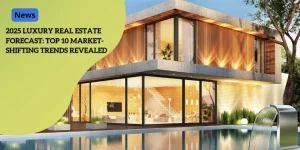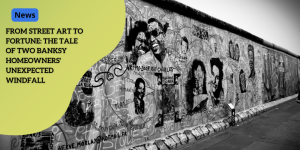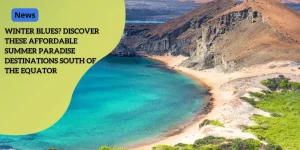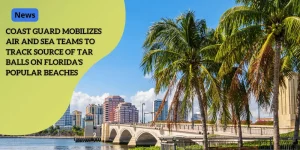Inside Cayo Norte: The Eco-Conscious Design of Larry Page’s Private Island
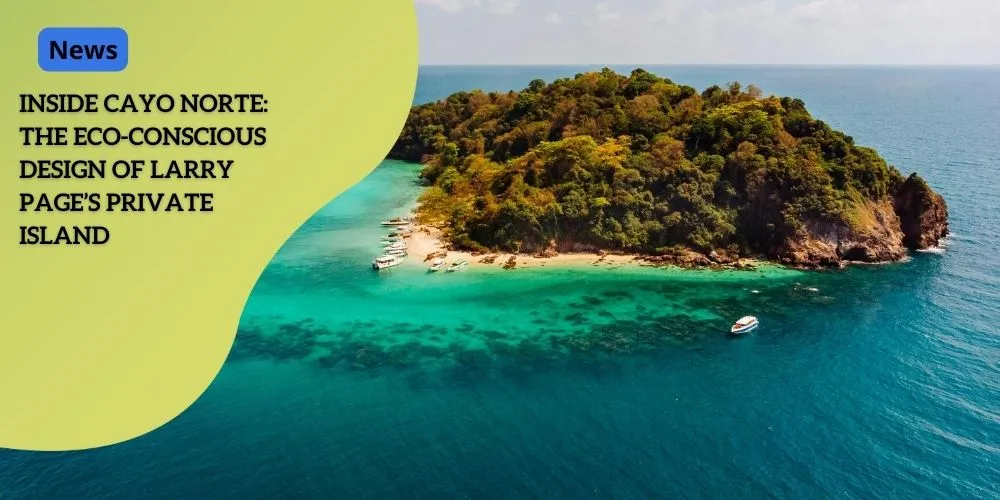
Anúncios
The Acquisition
Larry Page’s Vision for Cayo Norte
Larry Page, the visionary co-founder of Google, made headlines in 2018 with his acquisition of Cayo Norte, a stunning 300-acre island near Puerto Rico, for a whopping $32 million. This purchase wasn’t just about owning a piece of paradise; it reflected Page’s commitment to blending luxury with ecological preservation.
The Island’s Natural Beauty
Cayo Norte is a gem of natural beauty. With its unspoiled beaches, verdant forests, and crystal-clear waters, the island is a sanctuary for nature lovers. It’s not just the picturesque landscapes that make Cayo Norte special; the island is also a treasure trove of ecological richness.
Anúncios
Ecological Significance
The island is home to a diverse array of flora and fauna, making it an ecologist’s dream. Species that call this island home range from vibrant coral reefs teeming with marine life to rare tropical birds. The island’s ecology is both delicate and paramount, requiring thoughtful stewardship to preserve its splendor.
Page’s Commitment to Sustainability
From the outset, Larry Page has made it clear that his vision for Cayo Norte goes beyond creating a luxurious hideaway. He is dedicated to sustainable development, ensuring that the island’s natural habitats remain untouched by reckless construction. This approach aligns with his broader environmental ethos, which emphasizes minimal impact and maximum conservation.
Anúncios
- Using eco-friendly materials in all construction projects.
- Implementing renewable energy sources to power the island.
- Building infrastructure that complements the natural landscape without disrupting it.
Conclusion
Larry Page’s acquisition of Cayo Norte is a testament to his dual passion for luxury living and environmental preservation. It sets the stage for subsequent discussions on how he plans to balance development and sustainability on this idyllic island. As we explore this journey further, we’ll delve into the intricate measures being taken to protect Cayo Norte’s precious ecosystems while creating a private paradise. “`
Ecological Significance
Cayo Norte’s Biodiversity
Cayo Norte, acquired by Larry Page in 2018, is renowned for its ecological importance. This 300-acre island near Puerto Rico boasts a rich array of flora and fauna, making it a vital habitat for many species. The island features an array of ecosystems, from lush tropical forests to thriving coral reefs. These diverse habitats support an incredible variety of life, from colorful birds to unique marine species.
Key Species and Habitats
Several key species find refuge in Cayo Norte’s varied landscapes. Tropical birds, including rare species, utilize the island for nesting and feeding. The coral reefs provide shelter and breeding grounds for numerous fish and marine creatures, contributing to the overall health of the marine ecosystem.
Impact of Development
While the island’s biodiversity is a treasure, potential development poses significant risks. Introducing new infrastructure can disrupt the natural balance, affecting both terrestrial and marine ecosystems. Construction activities might lead to habitat destruction, soil erosion, and increased pollution, all of which have cascading effects on the island’s delicate environment.
Mitigating Ecological Damage
It is crucial that any development on Cayo Norte adopts eco-conscious principles to mitigate these impacts. Sustainable practices, such as careful planning and the use of eco-friendly materials, can help preserve the island’s natural beauty. Larry Page’s commitment to minimizing environmental harm is a step in the right direction, but continuous effort and collaboration with environmental experts are essential.
Conservation Efforts
Efforts to protect Cayo Norte’s ecological integrity are paramount. Conservation initiatives focused on preserving indigenous plants and animals can safeguard the island’s natural resources. Collaborating with environmental organizations and local communities ensures that development projects are sustainable and respectful of the natural habitat.
Community and Organizational Collaboration
Larry Page has expressed a commitment to working with environmental organizations and local communities. Such partnerships can lead to innovative conservation strategies and community-based projects that both protect the environment and support local livelihoods. By involving stakeholders, these efforts can create a sustainable model for island development that respects and enhances ecological health.
The Path Forward
Balancing development and conservation requires a nuanced approach that values both luxury and sustainability. Exemplary eco-conscious design practices, such as using renewable energy and maintaining green landscapes, can make Cayo Norte a model of sustainable luxury. It’s a challenging tightrope walk, but with careful planning and a strong commitment to ecological principles, it is possible to achieve a harmonious balance.
“`
Eco-Conscious Design Approach
Commitment to Sustainability
Larry Page’s acquisition of Cayo Norte wasn’t just a lavish purchase; it was a conscientious step toward blending luxury with sustainability. Page’s vision for the island focused on maintaining its pristine condition while incorporating cutting-edge, eco-friendly technologies. This mindset is pivotal in preserving Cayo Norte’s ecological balance and ensuring that development activities have minimal impact on its delicate environment.
Innovative Technologies and Materials
To minimize the environmental footprint, Page’s development plans involve using innovative materials and techniques. Renewable energy sources, such as solar panels and wind turbines, are integral to powering the island. Furthermore, the use of biodegradable and recyclable building materials ensures that the construction phase is eco-friendly. These practices are complemented by water conservation efforts, which include rainwater harvesting systems and sustainable waste management solutions.
Solar Energy and Wind Turbines
Harnessing solar power is a major component of the island’s energy plan. Solar panels strategically placed around the island maximize energy capture. Additionally, small-scale wind turbines contribute to the renewable energy mix, taking advantage of the island’s natural wind patterns to generate electricity. This combination not only reduces reliance on non-renewable resources but also ensures a steady, sustainable energy supply.
Eco-Friendly Construction Materials
The island’s development emphasizes the use of sustainable materials. Bamboo, recycled steel, and reclaimed wood are preferred choices for construction, reducing the carbon footprint and mitigating deforestation. These materials are not only durable but also blend seamlessly with the natural surroundings, maintaining the island’s aesthetic charm while being environmentally responsible.
Water Conservation Systems
Water sustainability is another crucial element. Rainwater harvesting systems capture and store rainwater for various uses, from irrigation to daily consumption. Additionally, greywater recycling processes ensure that wastewater is treated and reused, further reducing water wastage. These systems are designed to function with minimal intervention, promoting a self-sustaining water cycle on the island.
Responsive and Responsible Design
The design philosophy extends beyond technologies and materials. It includes the integration of natural landscapes into the living spaces, ensuring that the flora and fauna remain untouched. Green roofs, vertical gardens, and natural ventilation systems are some examples of how the built environment complements ecological preservation. This approach ensures that inhabitants can enjoy luxurious amenities without compromising the island’s natural beauty and biodiversity.
Green Roofing and Vertical Gardens
Buildings on the island feature green roofs and vertical gardens, which not only provide insulation but also absorb rainwater, reduce heat, and lower air temperatures. These features foster a harmonious blend between architecture and nature, creating habitats for local wildlife and maintaining the island’s lush green cover.
Natural Ventilation Systems
Natural ventilation is prioritized to reduce dependence on artificial air conditioning. Structural designs incorporate large windows and open spaces that enhance airflow, keeping indoor environments cool. This not only conserves energy but also promotes a healthier living atmosphere by constantly freshening the air. By embracing these eco-conscious design principles, Larry Page exemplifies how luxury and sustainability can coexist. The thoughtful application of innovative technologies and responsible building practices ensure that Cayo Norte remains an ecological haven, paving the way for future developments to follow in its sustainable footsteps.
Protecting Cayo Norte’s Natural Resources
Conservation Efforts to Preserve Flora and Fauna
Larry Page’s vision for Cayo Norte is not just about enjoying its beauty but preserving it for future generations. His eco-conscious approach means using cutting-edge conservation strategies to protect the island’s lush flora and diverse fauna. Native plants are being nurtured to prevent the encroachment of invasive species. This helps maintain the island’s natural balance and provides crucial habitats for local wildlife. The island’s rich coral reefs, home to a myriad of marine life, are being monitored and protected through advanced ecological technologies.
Collaboration with Environmental Organizations
Preserving Cayo Norte’s natural resources is a collaborative effort. Page has teamed up with environmental NGOs and leading scientists to implement effective conservation practices. By leveraging their expertise, they are developing strategies aimed at preserving the island’s unique ecosystems. For instance, partnerships with marine biologists ensure that Cayo Norte’s coral reefs remain vibrant and protected from environmental threats such as climate change and pollution.
Engaging Local Communities
It’s not just scientific experts who get a say; local communities are an integral part of the conservation equation. Page’s team actively engages with local Puerto Rican communities, ensuring that their voices are heard and they benefit from conservation efforts. Educational programs are being established to teach residents and visitors about the importance of preserving this unique environment. This holistic approach ensures that conservation efforts are culturally sensitive and sustainable.
All these actions reflect a strategy that respects the island’s natural heritage while ensuring its flourishing future. In preserving Cayo Norte’s natural resources, Larry Page is setting a precedent for how private ownership can be a force for ecological good. “`
Balancing Luxury and Sustainability
The Challenges of Creating a Luxurious Private Retreat
Transforming the pristine Cayo Norte into Larry Page’s private paradise presents a delicate balancing act: achieving luxury without compromising sustainability. The island’s lush landscapes and crystal-clear waters hold immense ecological significance, making it essential to tread lightly. The challenge lies in crafting an opulent retreat that aligns with eco-conscious principles while preserving the island’s natural wonders.
Examples of Sustainable Design Practices
Energy Efficiency
Larry Page’s vision for Cayo Norte incorporates renewable energy sources to power the island. Solar panels are strategically positioned to harness the abundant sunlight, while wind turbines capture the steady ocean breezes. This hybrid approach ensures a steady stream of clean energy, reducing reliance on fossil fuels and minimizing carbon footprint.
Water Conservation
Water scarcity can be a significant issue on isolated islands. Cayo Norte’s design includes cutting-edge water conservation systems such as rainwater harvesting and desalination plants. These systems ensure a sustainable water supply, supporting both human and ecological needs without depleting natural resources.
Sustainable Construction
Building materials play a crucial role in eco-friendly development. For Cayo Norte, the focus is on using sustainable, locally-sourced, and recycled materials. The construction process employs technologies that minimize environmental impact, such as green roofs and natural ventilation. These techniques not only reduce energy consumption but also harmonize with the island’s aesthetics.
Preserving Biodiversity
A key aspect of the island’s development is the preservation of its rich biodiversity. Larry Page collaborates with environmental organizations to ensure that construction does not disrupt local habitats. Measures include creating protected zones for endemic species and implementing eco-friendly landscaping that respects the existing flora and fauna.
Integration with Local Communities
Larry Page’s project also emphasizes the importance of local communities. By involving them in conservation efforts and sustainable practices, the development fosters a sense of shared responsibility. This collaboration not only protects the island’s resources but also enriches local culture and promotes eco-tourism.
Conclusion
Balancing luxury with sustainability on Cayo Norte is a complex yet achievable goal. Through innovative design, renewable energy sources, water conservation, and sustainable construction practices, Larry Page aims to create a retreat that respects and preserves the island’s ecological integrity.

